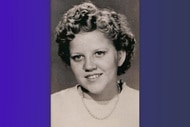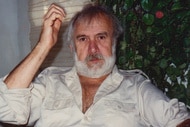Create a free profile to get unlimited access to exclusive videos, breaking news, sweepstakes, and more!
Tossed Beer Cans Led To Arrest Of Suspect In Brutal 1996 Cold Case Murder, Florida Police Say
Police have been trying to solve Terence Paquette's brutal stabbing death for 25 years. This week, DNA collected from discarded beer cans led to an arrest for murder.

It was a gruesome crime scene at a central Florida convenience store — even for seasoned crime scene investigators.
In 1996, police found the body of 31-year-old Terence Paquette in the bathroom of the store that he managed in Orange County, Florida. He was stabbed 73 times and his throat was slit. Blood was everywhere, and the cash deposit box was missing.
The case went cold and has remained unsolved for nearly 25 years. But this week, police said genetic genealogy and evidence on discarded Budweiser beer cans led them to a suspect. Kenneth Robert Stough Jr. was arrested for first-degree murder with a deadly weapon on Tuesday. A judge has ordered that he be held without bond, according to local Orlando station WESH.
Investigators in Florida are now working to solidify the case.
“He did not confess to the crime, but he had a hard time explaining the physical evidence,” Detective Brian Savelli said at a Thursday press conference.
Orange County Sheriff John Mina said police have worked diligently on the case; he added that in 1996, the only way to make an arrest on blood evidence was to compare it to another blood sample. Amid tech breakthroughs, the case was reopened in 2003 and a DNA profile was created from blood collected at the crime scene. It was placed into a DNA database but no matches were found, police said.
Savelli said that he started working on the case in 2019 and soon had a fresh idea.
“I was just thinking — if somebody was stabbed 73 times, there has got to be additional DNA that was not the victim’s and potentially the suspects,” Savelli said. “I figured there’s got to be something we can do.”
Using a bloodstain collected from a freezer handle, officers with the Florida Department of Law Enforcement were able to determine that it had come from one of three brothers. From there, detectives were able to identify a person of interest and trace them back to where they were that night in 1996.
Savelli zeroed in on Stough, who had previously worked at the convenience store. But his employment did not overlap with Paquette's time there. He also lived across the street from Paquette; decades later, he still lived in central Florida.
Soon, using a GPS tracker, he followed Savelli to a gas station in Lake County. He watched Stough throw away several beer cans, collected them, and they were later swabbed for DNA. It matched the DNA left at the crime scene.
Savelli said Paquette has no surviving relatives, but several of the victim's friends were notified; they were excited and relieved about the developments in the case, he said.
Police have said the case sends an important message to the families of victims: Even though years may go by, murder and violent crime victims are not forgotten and police, in many instances, are still working to solve the cases.
"I really give kudos to the amazing evidence techs that responded to that crime scene, that night, and had the forethought to process every single thing in the crime scene," Public safety expert and former deputy James Copenhaver told WRBW. “It’s just a good way to give closure to everybody involved – including the cops.”


























